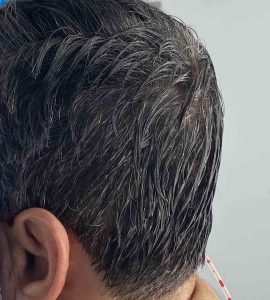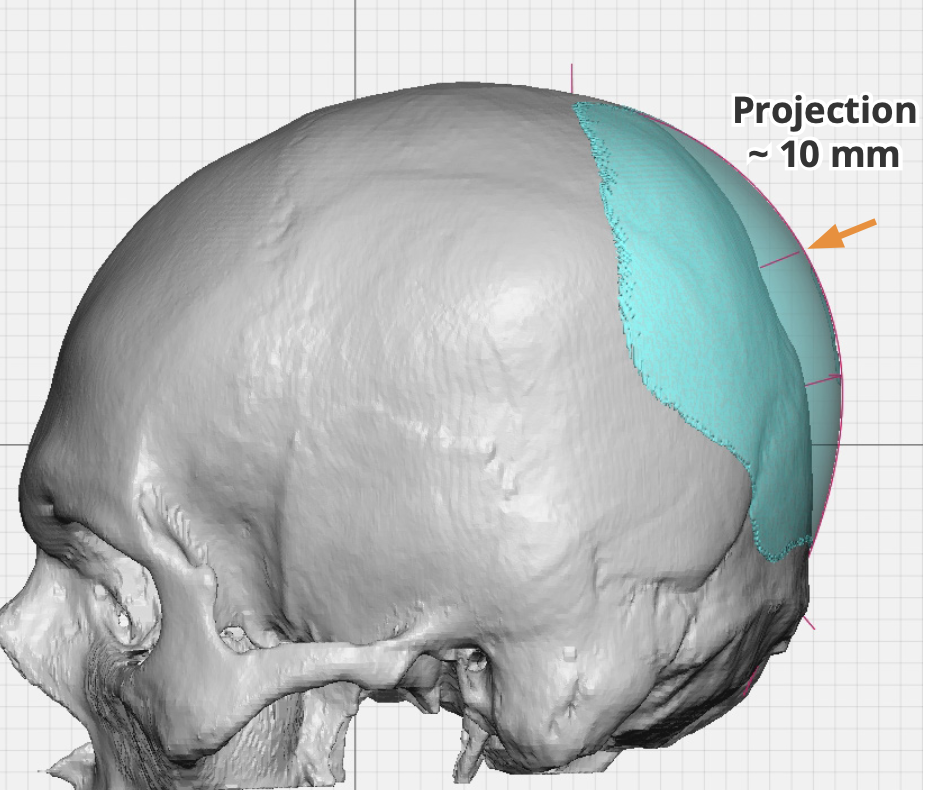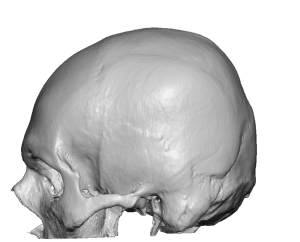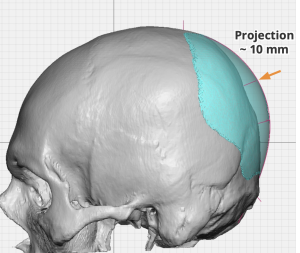Background: Flat areas on the back of the head are one of the most common aesthetic concerns of the skull. They occur in a wide variety of shapes and degrees of deformation from unilateral vs bilateral, symmetric vs asymmetric, moderate to severe flattening to one vs multiple skull surface involvements. Understanding the 3D shape of the back of the head deficiency allows for the best correction shape that a custom skull implant provides.
In bilateral or more complete back of the head flat areas a dimensional consideration in its correction is the location of the flattening. There are two basic types of such flattening seen in profile on a 3D scan…vertical and oblique based on the vector of its maximum depth. In vertical flattening the maximum depth of the deficiency is horizontal while in oblique flattening the maximum depth is angulated. In designing a skull implant whatever amount of projection is desired will control the shape of the implant.
Most bilateral flat back of the heads are usually angulated. The nuchal ridge or occipital bone is more prominent inferiorly while the paired parietal bones above it lack projection. This means the maximum depth of the projection deficiency is higher resulting in a skull implant design with a higher more fullness superiorly.




In placing custom skull implants I do not shave any hair for the procedure. While this seems counterintuitive for infection prevention the high vascularity of the scalp is very protective in that regard. With the lowest observed rate of infection of any aesthetic implant that I have placed in the body this is a testament to the importance of high vascularity in an implantation site.
Case Highlights:
1) Bilateral or complete back of the head flatness generally occurs either completely horizontal or in a more superiorly angulated direction.
2) In the design of a custom skull implant for the back of the head its maximum projection is located any a perpendicular line from the center of the flatness.
3) In hair bearing patients custom skull implants for the back of the head can be placed through a low horizontal scalp incision that does not require any hair shaving.
Dr. Barry Eppley
Indianapolis, Indiana







